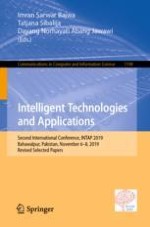2020 | Buch
Intelligent Technologies and Applications
Second International Conference, INTAP 2019, Bahawalpur, Pakistan, November 6–8, 2019, Revised Selected Papers
herausgegeben von: Prof. Imran Sarwar Bajwa, Prof. Dr. Tatjana Sibalija, Dayang Norhayati Abang Jawawi
Verlag: Springer Singapore
Buchreihe : Communications in Computer and Information Science
